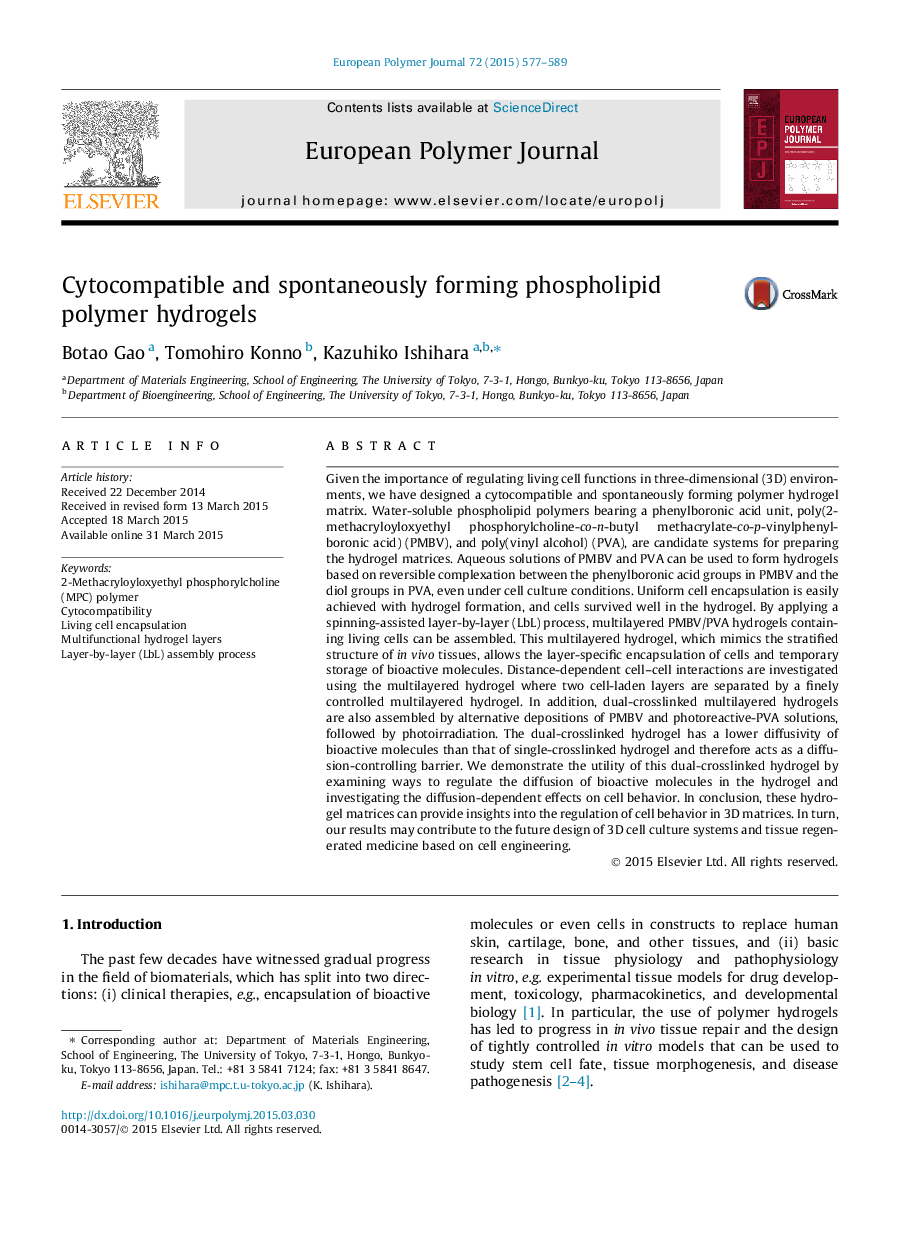| کد مقاله | کد نشریه | سال انتشار | مقاله انگلیسی | نسخه تمام متن |
|---|---|---|---|---|
| 1394695 | 1501363 | 2015 | 13 صفحه PDF | دانلود رایگان |
• Spontaneously forming cytocompatible polymer hydrogels are reviewed.
• The special properties of PMBV/PVA hydrogels are briefly explained.
• Spinning-assisted LbL method was used to fabricate multilayered PMBV/PVA hydrogels.
• This multilayered hydrogel was applied for regulating cell functions in 3D matrix.
Given the importance of regulating living cell functions in three-dimensional (3D) environments, we have designed a cytocompatible and spontaneously forming polymer hydrogel matrix. Water-soluble phospholipid polymers bearing a phenylboronic acid unit, poly(2-methacryloyloxyethyl phosphorylcholine-co-n-butyl methacrylate-co-p-vinylphenylboronic acid) (PMBV), and poly(vinyl alcohol) (PVA), are candidate systems for preparing the hydrogel matrices. Aqueous solutions of PMBV and PVA can be used to form hydrogels based on reversible complexation between the phenylboronic acid groups in PMBV and the diol groups in PVA, even under cell culture conditions. Uniform cell encapsulation is easily achieved with hydrogel formation, and cells survived well in the hydrogel. By applying a spinning-assisted layer-by-layer (LbL) process, multilayered PMBV/PVA hydrogels containing living cells can be assembled. This multilayered hydrogel, which mimics the stratified structure of in vivo tissues, allows the layer-specific encapsulation of cells and temporary storage of bioactive molecules. Distance-dependent cell–cell interactions are investigated using the multilayered hydrogel where two cell-laden layers are separated by a finely controlled multilayered hydrogel. In addition, dual-crosslinked multilayered hydrogels are also assembled by alternative depositions of PMBV and photoreactive-PVA solutions, followed by photoirradiation. The dual-crosslinked hydrogel has a lower diffusivity of bioactive molecules than that of single-crosslinked hydrogel and therefore acts as a diffusion-controlling barrier. We demonstrate the utility of this dual-crosslinked hydrogel by examining ways to regulate the diffusion of bioactive molecules in the hydrogel and investigating the diffusion-dependent effects on cell behavior. In conclusion, these hydrogel matrices can provide insights into the regulation of cell behavior in 3D matrices. In turn, our results may contribute to the future design of 3D cell culture systems and tissue regenerated medicine based on cell engineering.
Figure optionsDownload as PowerPoint slide
Journal: European Polymer Journal - Volume 72, November 2015, Pages 577–589
